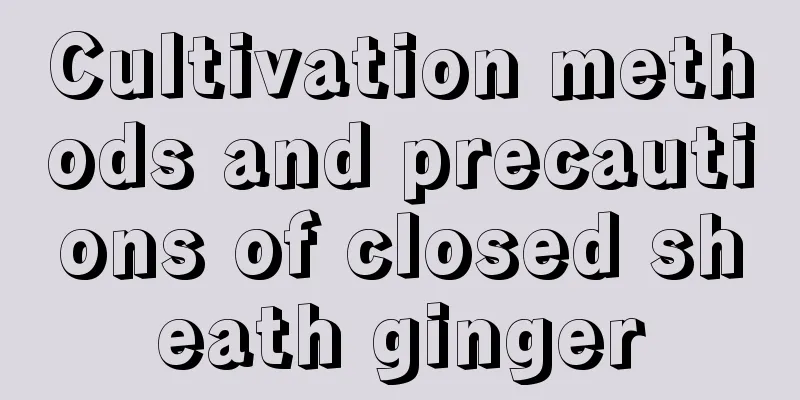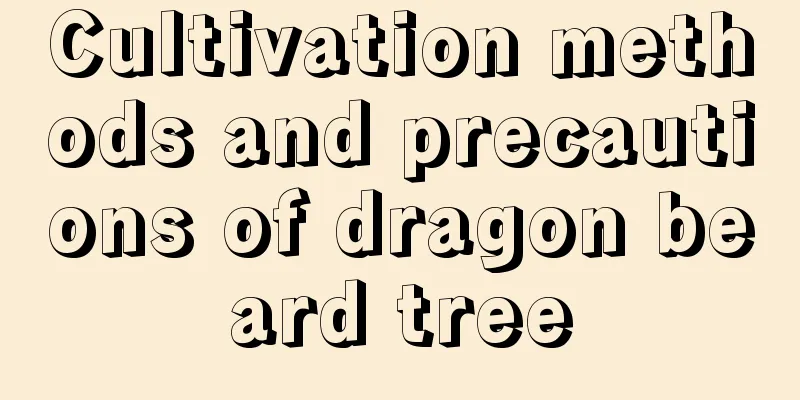Cultivation methods and precautions of closed sheath ginger

How to cultivate closed sheath gingersoilGinger has strong adaptability to soil and can grow in various soils, but it prefers loose, fertile, well-drained sandy soil, so it is better to choose such soil when planting. Before planting, you can disinfect the soil and apply a little base fertilizer. Light and temperatureGinger likes warmth and plenty of light. It is not tolerant to strong light, but can tolerate shade. The growing environment of Ginger needs to avoid direct sunlight. You can choose to maintain it in a cool place with bright light or build a sunshade to provide shade when the light is strong in summer. The suitable temperature for the growth of Ginger is 20℃-30℃. It can grow under higher temperatures and will be in a semi-dormant state in winter. Ginger has a strong cold resistance and can withstand temperatures above 0℃. Be careful not to let it freeze, otherwise the above-ground part of the plant will wither and die. It can withstand high temperatures above 35°C in summer and continue to grow, but the growth rate is slower. Water and fertilizer managementGinger likes a humid environment, requires moist soil and high air humidity, and needs a lot of fertilizer during the growing period. When cultivating Ginger, it is necessary to fertilize frequently. Wood ash, potassium sulfate, etc. can be used. You can also apply decomposed cake fertilizer water and farmyard manure, which is beneficial to the growth of the plant. Things to note when growing closed gingerReproductionThe propagation of Ginger is generally by sowing, cuttings, or root division. Pest controlGinger has strong disease resistance and rarely suffers from diseases and insect pests, but it may be susceptible to diseases such as leaf spot, as well as damage from pests such as borers, scale insects, and caterpillars. When ginger is threatened by diseases and pests, timely measures should be taken to prevent and control it, and more fertilizer should be applied to improve its disease resistance. |
<<: Cultivation methods and precautions of red Ruimu
>>: Cultivation methods and precautions of red banana
Recommend
What flowers are suitable for growing in Xiangfan? What are the city flowers and trees?
1. Climate characteristics of Xiangfan Xiangfan h...
Can succulents be planted in sand?
Can succulents be planted in sand? Succulents can...
Which month is the best to plant chayote?
Among the Cucurbitaceae plants, there is a fruit ...
How to cultivate Elsholtzia
1. Soil: Elsholtzia is not very demanding in term...
When is the best time to plant sesame?
Sesame seeds can start to germinate at a temperat...
Which month is suitable for planting Gastrodia elata?
When to plant Gastrodia elata Gastrodia elata is ...
How to grow water lilies
1. Maintenance methods 1. Temperature: Since it i...
Which month is suitable for planting dry rice?
When is dry rice planted? Upland rice is mainly p...
Breeding methods and precautions of Guangdong Evergreen
1. Soil It is recommended to choose acidic loam w...
When is the best time to harvest basil?
After the perilla is ripe, it must be harvested o...
How to clean containers and plants for hydroponic plants
1. Root removal and root washing Take out the pla...
How to grow Jiansinova succulent? Is Jiansinova easy to grow?
Swordsinova, also known as the Sword Poison Wizar...
How many seeds are needed for one acre of peanuts?
Peanuts are dicotyledonous plants that bloom abov...
Can Mimosa be grown indoors?
Can Mimosa be grown indoors? Mimosa can be grown ...
How to grow hibiscus at home
Hibiscus Growth Conditions It is best to choose l...









